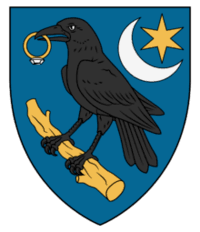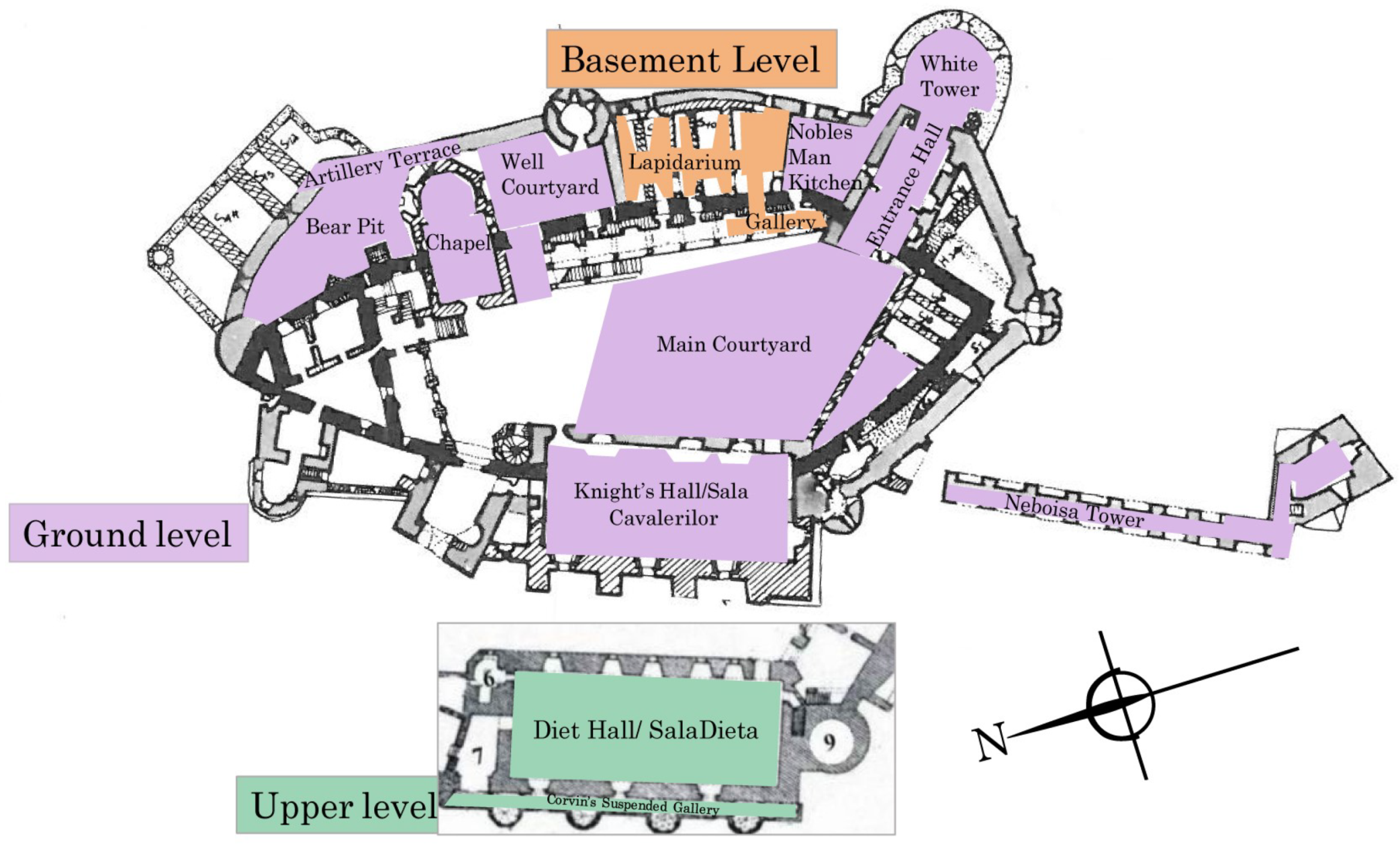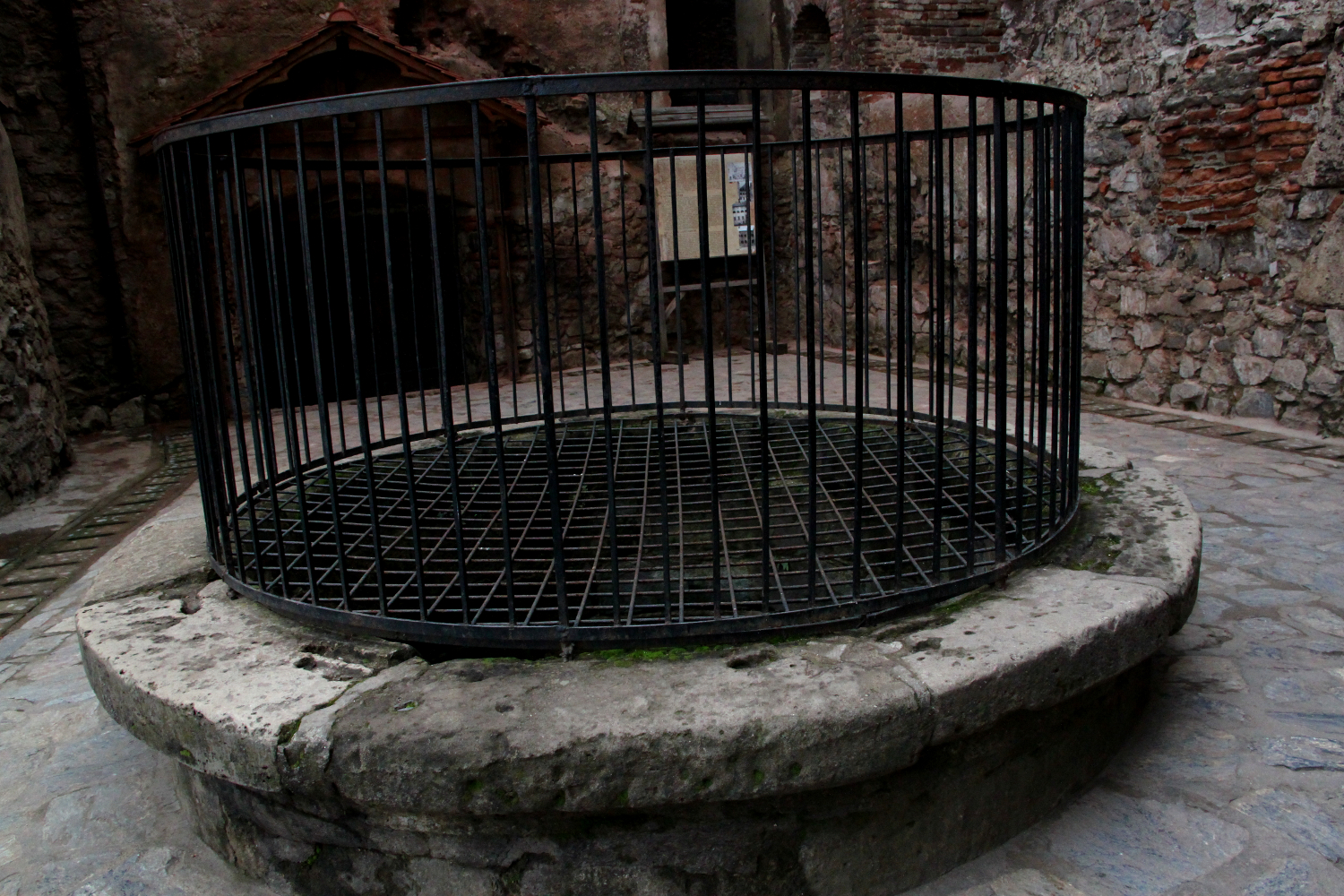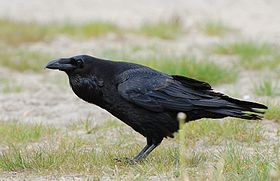 Castle
CastleCorvin Castle has a long history. It is known under different names: Corvinus Castle, Corvins’ Castle, Hunyadi castle, or even Hunedoara Castle. It was initially built 600 years ago atop a stone fortress by John of Hunyadi (Iancu de Hunedoara). Most of the towers of defense date from his time: The New Tower, the Old Tower, Capistrano Tower, and the Painted Tower. Then, the Knight's Hall and the Council Hall were built. Later on, new elements and fortifications were added to the castle by Matthias Corvinus and Gabriel Bethlen. Mathias’ loggia was built during Mathias Corvinus time. Here visitors can admire the only secular painting from Transylvania’s 15th century. The most notable expansion occurred during Prince Gabriel Bethlen in the 17th century, who built more towers and brought important changes to the castle's architectural style.
John of Hunyadi was one of the most important personalities in Europe in the fifteenth century.
He remained in history as the man who saved Belgrade besieged by the armies of Sultan Mehmed the Second, Conqueror of Constantinople.
His victory in Belgrade against the Turkish army brought him the gratitude of the entire Catholic world.
In the same year, the Pope decreed, by a papal bull issued on August 6, 1456, that all bells of the Catholic churches in Europe be drawn daily at 12.00. This practice is traditionally attributed to the international celebration of victory of Christianity lead by John of Hunyadi, in the battle of Belgrade, against the Ottoman army.
John of Hunyadi spent his childhood in the lands of Hunedoara, in the castle that he would later transform into one of the most imposing medieval monuments in Europe. His father, Voicu, died when John was a child.
The future commander of the Christian armies has acquired his military education as a young man.
Due to his successful military career, he greatly increased his wealth and attracted the gratitude of the King of Hungary. He became Governor or Transylvania and even Regent after the death of the Hungarian King.
Unfortunately, he did not have time to enjoy the victory from Belgrade, as he died few month later of the plague.
John of Hunyadi had two sons with Elizabeth Szilagyi: Ladislau, and Matthias Corvinus. The latter was to become at only 15 years old, King of Hungary and ruled the country until his death, aged 47. He is considered to be one of the most important kings of Hungary.
The castle is built in Gothic-Renaissance style, around the courtyards of the former fortifications. The new structure has thick walls with numerous circular defense towers. Usually, the towers had 2 levels: the ground level belonged to the guards, and the upper level represented living areas for the noblemen or guests and spaces for defense. The castle is built on a rock, and it used to be surrounded by water. The access inside was possible only with the drawbridge.
Let’s see the most important attractions of the castle. What to see during a visit to Corvin Castle:

Like any medieval castle, Corvin castle does not lack interesting legends.

During the visit, you will pass by an ancient well in one of the inner courtyards of the castle. The legend has it built by three Turkish prisoners whom John of Hunyadi kept in the castle. He promises the three that he will release them if they dig a well with good water. The prisoners did so and dug in the rock for 15 years, and at 28 meters deep, they finally found the precious water. Meanwhile, John had died, and his wife, Elisabeth Szilagyi, decided not to respect the word given by her husband and to execute the three Turks. As a last wish, the Turks request permission to write on the fountain an inscription: “You have water, but you don’t have a heart!” In fact, the inscription says as follows: “The one who wrote it is Hassan, a prisoner in the fortress near the church.” The old Arabic characters contained in the inscription date back to the middle of the 15th century. The current position of the inscription is on one of the buttresses of the chapel.

Is probably the most interesting one. It explains the story of the heraldic sign of the first noblemen who built and ruled the castle 600 years ago. A raven holding a golden ring in his beak is inscribed on the Corvin family's coat of arms. And there is a reason why. It is said that John of Hunyadi was actually an illegitimate son of Sigismund of Luxembourg, king of Hungary, and a beautiful woman from the Land of Hateg, named Elizabeth. To protect her and her honor, the king gives her one of his brave militaries to be her husband. His name was Voicu. The king also offers her a ring as a gift for the unborn child to be recognized when he grows up and goes to the royal court. Later, after years, during a trip made by Voicu’s family, they stopped for lunch. The ring was forgotten on the edge of the towel on which the snacks were placed. A raven, attracted by the glow of the ring, stole it, trying to get away with it. The child John of Hunyadi took a bow and arrows the raven, thus recovering the ring. When he grew up and reached the royal court, he told this story to the king. Impressed by the boy's courage, the king decided that the symbol of the family of the Hunedorenians would be the golden ring in the beak. Moreover, the family name also comes from the Latin “Corvus,” which means “raven,” a bird that symbolized wisdom and longevity in the Middle Ages. During the visit to the castle, visitors discover the 500-year-old frescoes, which show the legend we just mentioned earlier.
According to some historians, the courtyard of the Corvins’ stle was in the past the place of public executions. According to legend, Ana, John Török's wife, the nobleman who owned the Corvin Castle, was killed in the courtyard. John Török spent most of his time on the battlefield. He was a very jealous man, so every time he left home, he would remind his beautiful Ana not to go through her mind to deceive him, for he would have no mercy on her. Once, it happened that the young woman remained locked in her room and had to call for the blacksmith to unlock her. The spy who Török left to follow his wife told his master what had happened. Török ordered his wife to be removed and tied to a pillar to punish her. Then he ordered the execution of Ana.